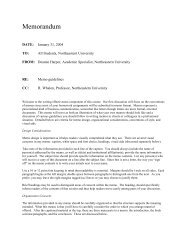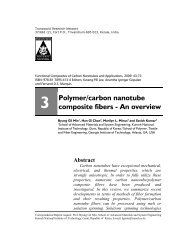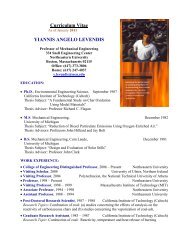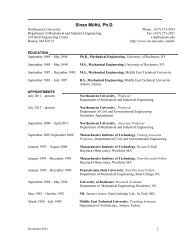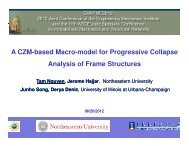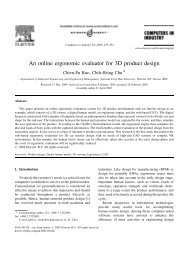You also want an ePaper? Increase the reach of your titles
YUMPU automatically turns print PDFs into web optimized ePapers that Google loves.
L. Pallarés, J.F. <strong>Hajjar</strong> / Journal of Constructional Steel Research 66 (2010) 198–212 203<br />
Fig. 1. Assessment of anchor strength using the minimum of steel <strong>and</strong> concrete failure formulas in AISC <strong>and</strong> EC-4.<br />
5. Reassessment of headed steel stud strength in the AISC<br />
specification<br />
From Fig. 3 <strong>and</strong> Table 7, where the steel formula <strong>and</strong> concrete<br />
formula of EC-4 with resistance factors are assessed respectively,<br />
it is seen that EC-4 presents conservative results for design purposes,<br />
particularly when the resistance factor is applied, For AISC<br />
[30], the results are less conservative; as a result, new resistance<br />
factors are assessed in this paper for these provisions based on use<br />
of the experimental database. Using recommendations by Ravindra<br />
<strong>and</strong> Galambos [51], resistance factors can be computed to compensate<br />
for the scatter <strong>and</strong> low mean values exhibited by the results<br />
from the current AISC [30] formulas, as seen in Fig. 1. Given a reliability<br />
index, β, the resistance factor can be computed using Eq. (1).<br />
φ = Rm<br />
e (−αβVR) , (1)<br />
Rn<br />
where<br />
Rm is the average of the ratio between the test result <strong>and</strong> the<br />
Rn<br />
predicted value;



